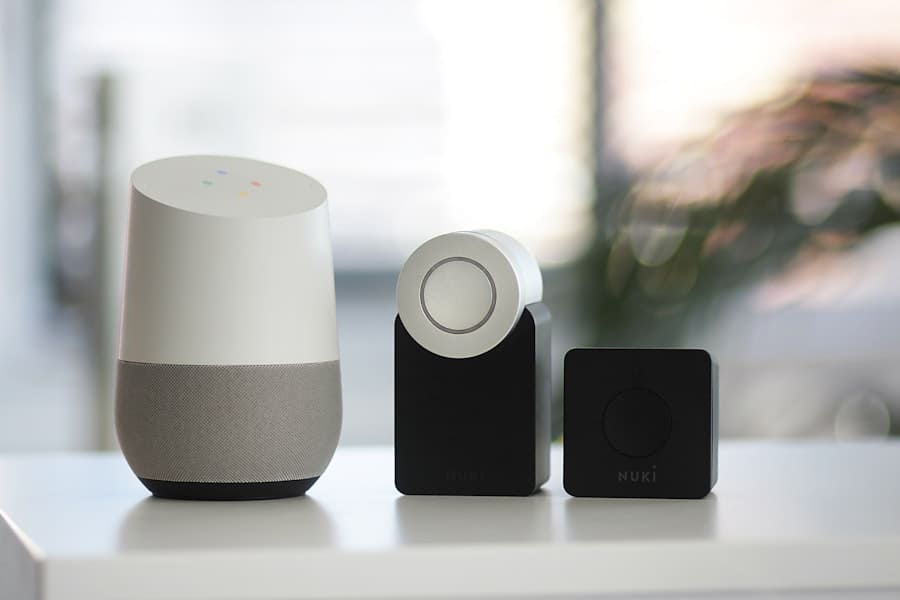The agricultural sector is undergoing a significant transformation, driven by the integration of technology into traditional farming practices. At the forefront of this revolution are Internet of Things (IoT)-connected sensors, which are reshaping how farmers monitor and manage their crops. These sensors collect real-time data on various environmental parameters, such as soil moisture, temperature, humidity, and light levels.
By leveraging this data, farmers can make informed decisions that enhance productivity and sustainability. The convergence of agriculture and technology not only improves operational efficiency but also addresses pressing global challenges such as food security and resource management. The adoption of IoT-connected sensors in agriculture is not merely a trend; it represents a paradigm shift towards precision farming.
This approach allows for the customization of agricultural practices based on specific field conditions rather than relying on generalized methods. As a result, farmers can optimize inputs like water, fertilizers, and pesticides, leading to increased yields and reduced waste. The ability to gather and analyze data in real-time empowers farmers to respond swiftly to changing conditions, ultimately fostering a more resilient agricultural ecosystem.
Key Takeaways
- IoT-connected sensors are revolutionizing agriculture by providing real-time data on environmental conditions, crop health, and soil moisture levels.
- These sensors play a crucial role in optimizing irrigation by enabling farmers to monitor and control water usage more efficiently.
- The benefits of using IoT-connected sensors for irrigation management include improved water efficiency, reduced costs, and increased crop yields.
- IoT-connected sensors help in water conservation by enabling precise and targeted irrigation, reducing water wastage, and promoting sustainable farming practices.
- Despite their potential, challenges and limitations of implementing IoT-connected sensors in agriculture include high initial costs, technical complexity, and data security concerns.
The Role of IoT-Connected Sensors in Optimizing Irrigation
Optimizing Irrigation with Precise Data
These sensors can be strategically placed throughout a field to monitor variations in moisture content, allowing farmers to apply water only where and when it is needed. This targeted approach minimizes water wastage and ensures that crops receive the optimal amount of hydration for growth.
Integrating with Automated Irrigation Systems
Moreover, IoT sensors can integrate with automated irrigation systems, enabling farmers to set up smart irrigation schedules based on real-time data. For instance, if a sensor detects adequate soil moisture after rainfall, the system can automatically delay irrigation, conserving water resources.
Enhancing Crop Resilience and Reducing Labor Costs
Conversely, during dry spells, the system can trigger irrigation to maintain crop health. This dynamic adjustment not only enhances crop resilience but also reduces labor costs associated with manual irrigation management.
Benefits of Using IoT-Connected Sensors for Irrigation Management
The benefits of employing IoT-connected sensors for irrigation management extend beyond mere water conservation. One of the most significant advantages is the enhancement of crop yield and quality. By ensuring that crops receive the right amount of water at the right time, farmers can optimize growth conditions, leading to healthier plants and higher-quality produce.
Additionally, the use of IoT-connected sensors contributes to sustainable farming practices. By minimizing water usage and reducing runoff, these technologies help protect local ecosystems and preserve water resources for future generations.
Furthermore, the data collected by these sensors can be analyzed to identify trends and patterns over time, enabling farmers to make long-term improvements in their irrigation strategies. This data-driven approach fosters a culture of continuous improvement within agricultural operations, ultimately leading to more sustainable practices.
How IoT-Connected Sensors Help in Water Conservation
Water conservation is an urgent concern in agriculture, particularly in arid regions where water resources are limited. IoT-connected sensors are instrumental in addressing this challenge by providing farmers with actionable insights into their water usage. By monitoring soil moisture levels in real-time, these sensors enable farmers to apply water more efficiently, reducing unnecessary irrigation cycles.
This not only conserves water but also lowers energy costs associated with pumping and distributing water. In addition to optimizing irrigation schedules, IoT sensors can also detect leaks or inefficiencies in irrigation systems. For example, if a sensor identifies an unexpected drop in soil moisture levels that cannot be explained by weather conditions, it may indicate a leak in the irrigation infrastructure.
By promptly addressing such issues, farmers can prevent further water loss and ensure that their irrigation systems operate at peak efficiency. This proactive approach to water management is essential for sustainable agriculture in an era of increasing climate variability.
Challenges and Limitations of Implementing IoT-Connected Sensors in Agriculture
Despite the numerous advantages of IoT-connected sensors in agriculture, several challenges hinder their widespread adoption. One significant barrier is the initial cost of implementing these technologies. While prices have been decreasing over time, the upfront investment required for purchasing sensors and establishing the necessary infrastructure can be prohibitive for small-scale farmers.
Additionally, ongoing maintenance and data management costs can add to the financial burden. Another challenge lies in the complexity of data interpretation. While IoT sensors generate vast amounts of data, not all farmers possess the technical expertise required to analyze this information effectively.
Without proper training or access to user-friendly platforms that translate data into actionable insights, farmers may struggle to leverage the full potential of these technologies. Furthermore, connectivity issues in rural areas can impede the real-time transmission of data from sensors to farmers’ devices, limiting their ability to respond promptly to changing conditions.
Case Studies of Successful Implementation of IoT-Connected Sensors in Agriculture
Several case studies illustrate the successful implementation of IoT-connected sensors in agricultural settings, showcasing their transformative potential. One notable example is the use of smart irrigation systems by vineyards in California’s Napa Valley. By deploying soil moisture sensors throughout their vineyards, growers were able to monitor moisture levels accurately and adjust their irrigation schedules accordingly.
This approach not only reduced water usage by up to 30% but also improved grape quality, leading to higher-quality wines that commanded premium prices in the market. Another compelling case study comes from a large-scale cotton farm in Australia that integrated IoT technology into its operations. The farm installed a network of weather stations and soil moisture sensors across its fields to gather real-time data on environmental conditions.
By analyzing this data, the farm was able to implement precision irrigation techniques that optimized water usage while maintaining high crop yields. The results were impressive: the farm reported a 25% reduction in water consumption and a significant increase in overall productivity.
Future Trends and Innovations in IoT-Connected Sensors for Irrigation
As technology continues to evolve, the future of IoT-connected sensors in agriculture looks promising. One emerging trend is the integration of artificial intelligence (AI) with sensor technology. AI algorithms can analyze data collected from multiple sources—such as weather forecasts, soil conditions, and crop health—to provide predictive insights that enhance decision-making processes for farmers.
This level of sophistication could lead to even more precise irrigation management strategies tailored to specific crops and environmental conditions. Additionally, advancements in sensor technology are likely to improve their affordability and accessibility for farmers worldwide. Innovations such as low-cost wireless sensors and solar-powered devices are making it easier for smallholder farmers to adopt these technologies without incurring significant expenses.
Furthermore, as connectivity improves through initiatives like 5G networks, real-time data transmission will become more reliable, enabling farmers to respond swiftly to changing conditions on their farms.
The Impact of IoT-Connected Sensors on the Future of Agriculture
The integration of IoT-connected sensors into agricultural practices represents a significant leap forward in how farming is conducted globally. By optimizing irrigation management through real-time data collection and analysis, these technologies empower farmers to make informed decisions that enhance productivity while conserving vital resources like water. As challenges related to climate change and food security intensify, the role of IoT-connected sensors will become increasingly critical in fostering sustainable agricultural practices.
The potential for improved crop yields, reduced environmental impact, and enhanced resilience against climate variability positions IoT-connected sensors as a cornerstone of modern agriculture’s future landscape. As this technology matures and becomes more widely adopted, it holds the promise of transforming not only individual farms but also entire agricultural systems worldwide.
A related article to How IoT-Connected Sensors Optimize Irrigation in Agriculture is “Best Software for Fault Tree Analysis in 2023” which can be found at this link. This article discusses the top software options for conducting fault tree analysis, a critical process in identifying and analyzing potential system failures. By utilizing advanced software tools, industries can improve their risk management strategies and enhance overall system reliability.
FAQs
What is IoT-connected sensor technology in agriculture?
IoT-connected sensor technology in agriculture refers to the use of Internet of Things (IoT) devices to monitor and manage various aspects of agricultural operations. These sensors are connected to the internet and can collect and transmit data on environmental conditions, crop health, and irrigation needs.
How do IoT-connected sensors optimize irrigation in agriculture?
IoT-connected sensors optimize irrigation in agriculture by providing real-time data on soil moisture levels, weather conditions, and crop water requirements. This data allows farmers to precisely control irrigation systems, ensuring that crops receive the right amount of water at the right time, leading to improved water efficiency and crop yields.
What are the benefits of using IoT-connected sensors for irrigation in agriculture?
The benefits of using IoT-connected sensors for irrigation in agriculture include improved water efficiency, reduced water waste, lower operational costs, increased crop yields, and better overall farm management. These sensors also enable farmers to remotely monitor and control irrigation systems, saving time and labor.
What types of IoT-connected sensors are used for optimizing irrigation in agriculture?
Various types of IoT-connected sensors are used for optimizing irrigation in agriculture, including soil moisture sensors, weather stations, flow meters, and water level sensors. These sensors can be deployed across fields to gather data on soil conditions, weather patterns, and water usage, allowing for precise irrigation management.
How does the use of IoT-connected sensors contribute to sustainable agriculture?
The use of IoT-connected sensors contributes to sustainable agriculture by promoting efficient water usage, reducing environmental impact, and improving overall resource management. By optimizing irrigation practices, farmers can conserve water, minimize chemical runoff, and enhance the long-term sustainability of their operations.



